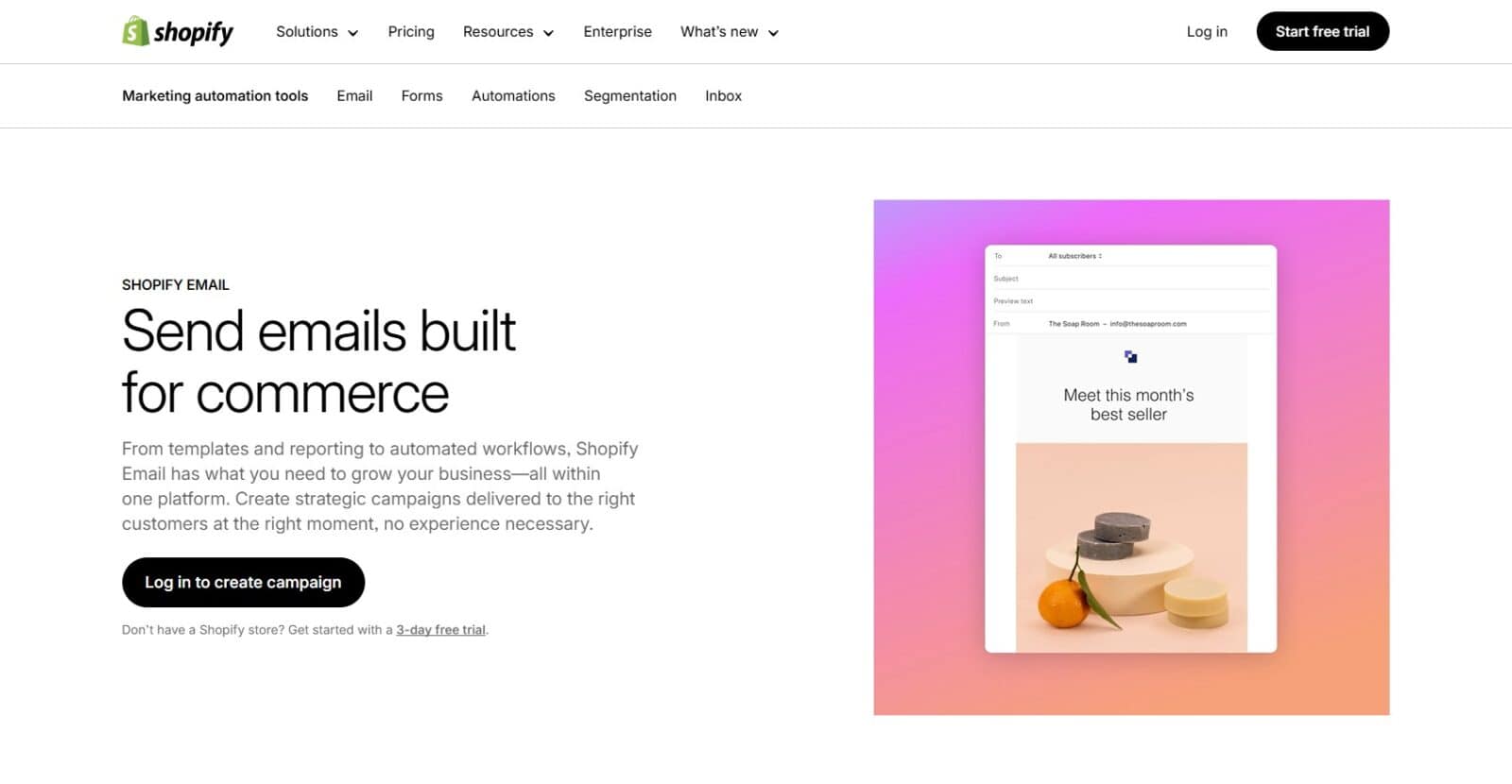Sponsored
How to master localization on Shopify: A complete guide
Expand your Shopify store globally with effective localization, including language adaptation, currency and pricing, and more.

Just a heads up, if you buy something through our links, we may get a small share of the sale. It’s one of the ways we keep the lights on here. Click here for more.
Expanding your Shopify store globally is an exciting step, but selling internationally isn’t just about translating your website. It’s about localization—adapting your store to fit different languages, cultures, currencies, and buying behaviors.
Effective localization Shopify can significantly improve customer experience, increase conversions, and drive international growth.
This article will explore how to successfully localize your Shopify store, key features to use, and best practices to maximize success.
What is Shopify Localization?
Localization is the process of adapting your online store to different markets. This goes beyond translation and includes:
- Language adaptation – Translating text accurately, including product descriptions, policies, and checkout pages.
- Currency and pricing – Displaying local currencies with proper conversions and payment methods.
- Cultural customization – Adjusting visuals, colors, and messaging to suit local preferences.
- SEO optimization – Using region-specific keywords to rank higher in local search engines.
- Legal and tax compliance – Adhering to different countries' tax rules, shipping policies, and business regulations.
If done correctly, localization improves engagement and boosts international sales.
Why is Localization Important for Shopify Stores?
Localization is crucial for Shopify stores because it directly impacts sales, customer trust, and brand reputation in international markets.
When shoppers visit a store in their native language with familiar pricing, payment methods, and cultural references, they are more likely to complete a purchase.
Studies show that over 76% of global consumers prefer buying in their own language, making localization a key factor in increasing conversions.
A well-localized store provides a seamless user experience, reducing cart abandonment and building long-term customer loyalty.
Additionally, localized SEO helps Shopify stores rank higher in regional search engines, attracting more organic traffic from different markets.

Many countries have unique tax laws, shipping requirements, and payment preferences, which localization helps businesses comply with effortlessly.
Without localization, potential customers may feel alienated or distrustful, leading them to choose competitors that cater better to their needs.
Furthermore, international expansion becomes more scalable and profitable when businesses optimize their store for different regions.
In a highly competitive eCommerce space, localization gives brands a strategic advantage, allowing them to connect with diverse audiences worldwide.
Ultimately, investing in localization ensures that Shopify merchants maximize their global revenue potential while delivering an outstanding shopping experience.
How to Set Up Localization on Shopify?
Shopify offers several tools to help businesses localize their stores effectively. Here’s a step-by-step guide:
1. Enable Shopify Markets
Shopify Markets is an official feature that allows merchants to manage multiple markets from a single store. With Shopify Markets, you can:
- Translate content into different languages.
- Automatically convert currencies.
- Customize pricing and payment methods per region.
- Adjust tax and shipping settings for different countries.
To enable Shopify Markets:
- Go to Settings in your Shopify dashboard.
- Click on Markets and add your target countries.
- Configure currencies, languages, and tax settings accordingly.
2. Use a Shopify Multilingual App
Shopify supports multiple languages, but you’ll need a translation app for complete localization. Some of the best apps for translating your store include:
- Shopify Translate and Adapt (Shopify’s built-in solution)
- Weglot (AI-powered translation with manual editing)
- Langify (Great for SEO-friendly translations)
- GTranslate (Uses Google Translate with customization)
To enable translations:
- Install a translation app from the Shopify App Store.
- Select your target languages and configure settings.
- Manually edit translations or use AI-generated versions.
- Display language switchers on your store.
3. Enable Local Currencies & Payment Methods
Customers prefer to see prices in their local currency. Shopify supports multi-currency payments via Shopify Payments and other gateways.
To set up multiple currencies:
- Navigate to Settings → Payments in Shopify.
- Enable Shopify Payments and select “Currencies.”
- Add the currencies you want to support.
Additionally, offering local payment options (PayPal, Klarna, Alipay, etc.) improves checkout conversion rates.
4. Customize Regional Pricing & Tax Settings
Different markets have different tax structures and pricing strategies. Shopify lets you:
- Set unique product prices for different regions.
- Configure tax rates based on customer location.
- Offer duty and import fee estimates at checkout.
To set up tax and pricing:
- Go to Settings → Taxes and Duties.
- Configure tax rates for each country.
- Adjust pricing based on market conditions.
5. Optimize for Local SEO
To attract international customers, you must optimize your Shopify store for local search engines like Google, Baidu, and Yandex.
Here’s how:
- Use hreflang tags to indicate different language versions of your pages.
- Translate metadata (titles, descriptions) to match local keywords.
- Optimize URLs with country-specific domains (e.g., .de for Germany, .fr for France).
- Submit your site to Google Search Console for different regions.
6. Adjust Design & Visual Elements
Different cultures may not receive certain colors, images, and layouts well. Adapt your design based on:
- Local color psychology (e.g., red signifies luck in China but danger in Western countries).
- Cultural symbolism (Avoid offensive imagery or gestures).
- Localized promotions (Run holiday sales that match regional festivals).
7. Provide Multilingual Customer Support
Having a localized store isn’t enough—customer support should also be in multiple languages. Options include:
- Using AI chatbots for instant responses.
- Offering email and phone support in key languages.
- Hiring bilingual customer service agents for high-traffic regions.
Common Localization Mistakes to Avoid
Even with the right tools, mistakes can hurt your global expansion. Here are pitfalls to watch out for:
- Using Poor AI Translations – Machine translations alone may lead to errors; always manually proofread.
- Not Adjusting Checkout for Local Currencies – If customers see USD but prefer their currency, they may abandon their cart.
- Ignoring Local Laws & Taxes – Countries like the EU have strict VAT rules. Ensure compliance.
- Skipping SEO Optimization – A translated page isn’t enough; optimize for regional search engines.
- Not Offering Local Payment Options – Customers in China prefer Alipay, while Germans use Klarna.
Successfully localizing your Shopify store, can skyrocket your global sales.
By translating content, adapting pricing, optimizing for SEO, and offering local payment methods, you can create a seamless shopping experience for international customers.
With tools like Shopify Markets, Weglot, and Langify, you can easily expand into new regions without hassle. Start localizing today and watch your Shopify store thrive worldwide!
We’d love to hear your thoughts on expanding your Shopify store globally through effective localization! How do you plan to adapt your store for international markets, and what challenges do you anticipate? Share your experiences and insights in the comments below.
Have any thoughts on this? Drop us a line below in the comments, or carry the discussion to our Twitter or Facebook.
Editors’ Recommendations:
Disclosure: This is a sponsored post. However, our opinions, reviews, and other editorial content are not influenced by the sponsorship and remain objective.





































